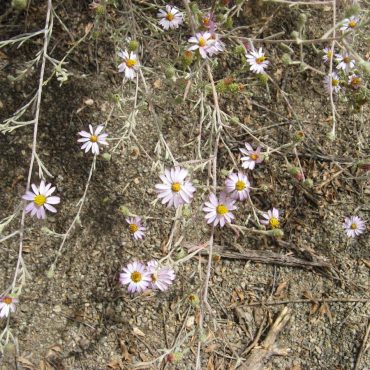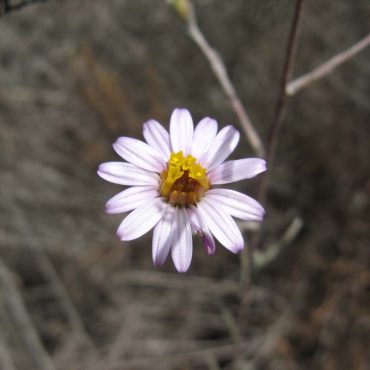Patches of the slender Del Mar sand aster (Corethrogyne filaginifolia) bloom in late summer along the south-side trails. Del Mar sand asters grow in dry, sandy openings in sage scrub and chaparral, but in San Diego recent development has made suitable habitats locally uncommon, and our population, which some classify as a separate variety, is considered threatened. Reserves such as San Elijo Lagoon Ecological Reserve provide a refuge.
Del Mar Sand Aster
Corethrogyne filaginifolia
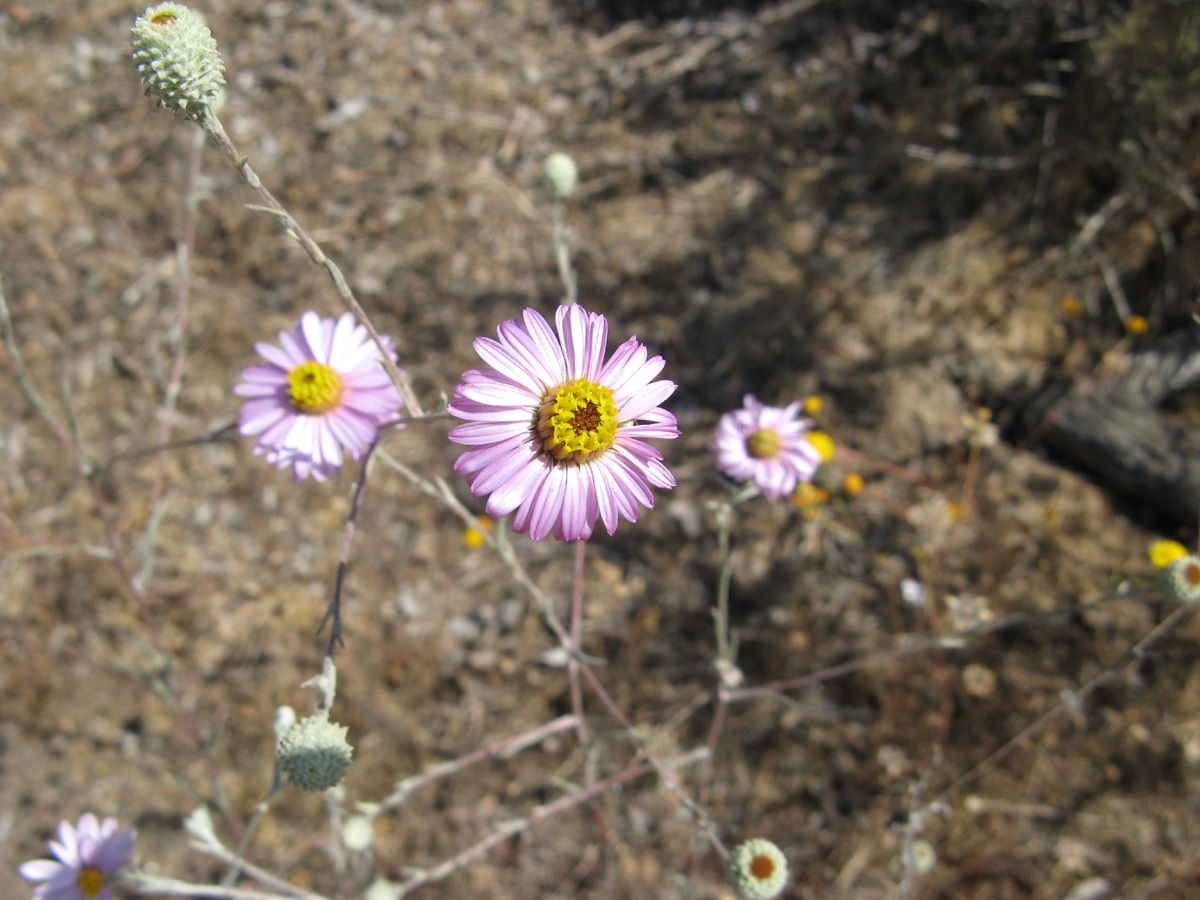
Other Common Names:
San Diego sand aster, sand aster
Description 2,4,26,59
Del Mar sand aster is a perennial plant, usually less than three feet (1 m) in height.1 The species is highly variable. Local plants are upright or sprawling. Leaves are usually narrow-linear and woolly with tangled white hairs that give the plant a gray color.
Flower heads have the typical daisy appearance with yellow disk florets and white to lavender ray florets. Flower heads are generally less than ¾ inch (2 cm) in diameter. In local populations, ray florets are usually lavender and 15-30 in number. The developing bud and the elongated receptacle below the flower head are covered with rows of small, overlapping leaf-like phyllaries that “shingle” the bud and receptacle; phyllary tips curl outward giving the bud a resemblance to a pineapple. Blooms occur June-December.1
Seeds are elongate,about 5/32 inches (3-4 mm) long, and wind-distributed by means of a ring of brownish bristles (the pappus) that is slightly longer than the seed.
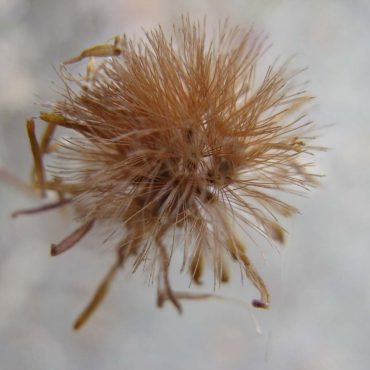
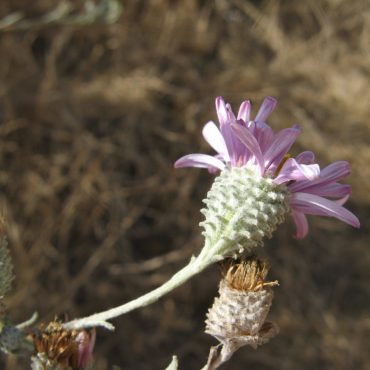
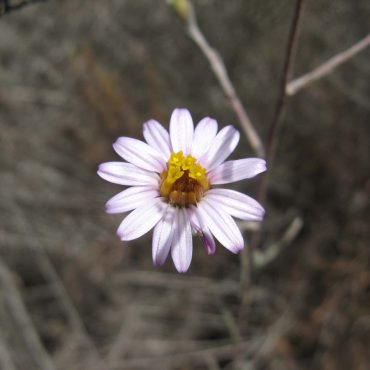
Distribution 7
Sand Aster is native to central and southern California and Baja California, Mexico. It occurs in coastal sage scrub, often in sandy areas, bluffs and dunes. The local population, known as Del Mar sand aster and considered a separate variety by some, occurs only in coastal San Diego County.
In the Reserve, Del Mar sand aster is commonly seen along the trails on the south side, especially during late summer and fall.
Learn more about plant vegetation types here
Classification
Sand aster is a dicot angiosperm in the sunflower family, the Asteraceae.2 This is the largest family of vascular plants in the Northern Hemisphere.143 “Flowers” of Asteraceae are made up of one or both of two types of flowers (florets): symmetrical disk florets and strapped-shaped ray florets. These are crowded onto a common base (receptacle) , and together are often assumed to be a single flower, which we call a flower head.11,44,49
Other familiar Asteraceae that occur in the Reserve include Bush Sunflower (Encelia californica), and goldenbush (Isocoma menziesii) and California sagebrush (Artemisia californica).48
The genus Corethrogyne has the typical daisy-like flower head with 10-40 ray florets and 10-many disk florets.
There is disagreement over the taxonomy of this species. Previously, our local population was recognized as a distinct variety, var. linifolia, with a distribution restricted to coastal San Diego County. However, recently several varieties, including var. linifolia have been combined into a single widespread and non-threatened group, var. filaginifolia.2 Because suitable habitat is diminishing in coastal Southern California, the local Sierra Club19 and the California Native Plant Society45,79 have expressed concern for the long-term survivability of our local population and have urged more taxonomic study before any revision. They retain the variety linifolia, and this Plant Guide is following their recommendation.
Alternate Scientific Names:
Lessingia filaginifolia
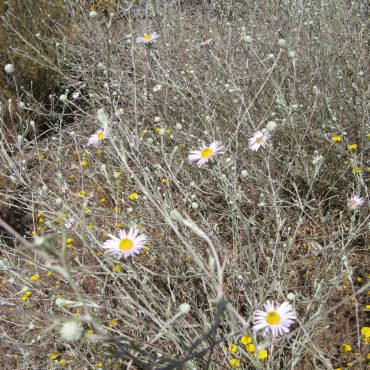
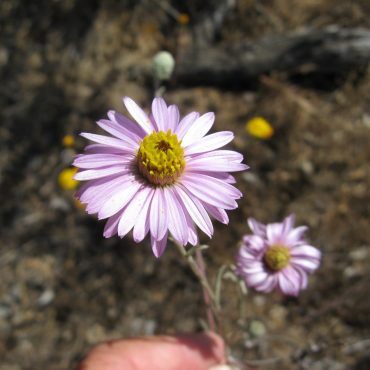
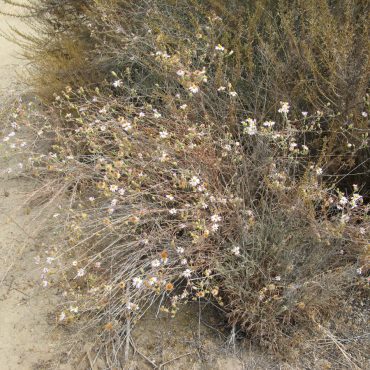
Ecology
Like other species of the coastal sage scrub, Del Mar sand aster is drought-tolerant. The foliage is sparse in summer and fall, and the leaves are narrow and woolly (tomentose). These are adaptations to reduce water loss.
Del Mar sand aster is one of the few local plants that flowers during the peak of the dry season when it is an important food source for butterflies and bees. Some native bees use the white wool from the stems in their nests.59
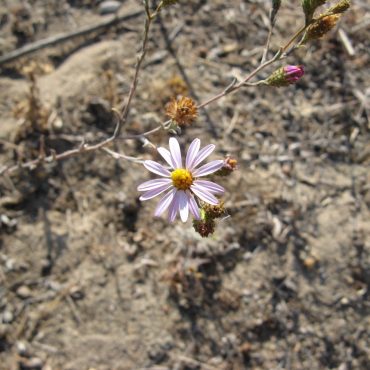
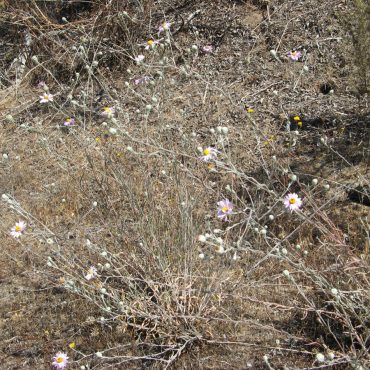
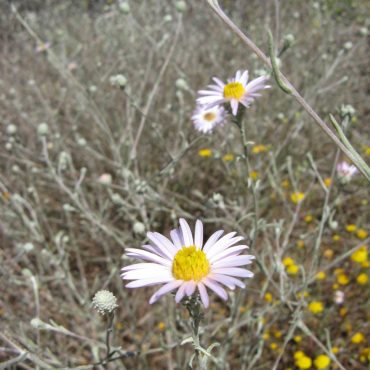
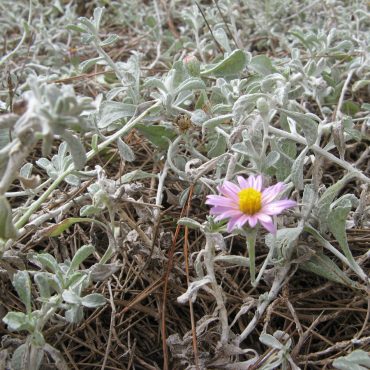
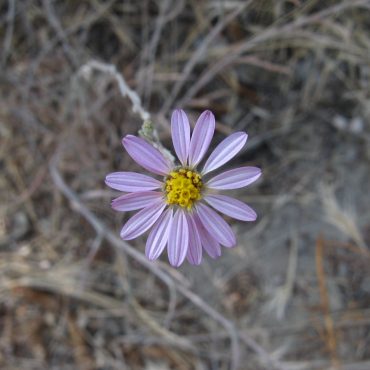
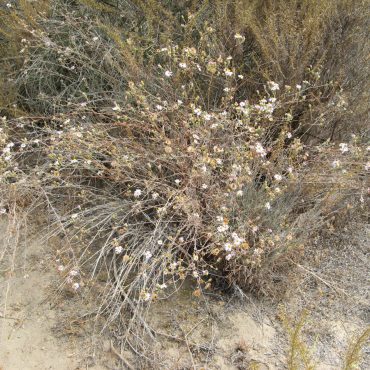
Interesting Facts
The species name, filaginifolia, refers to the white, woolly hairs on the surface of the leaves.21
